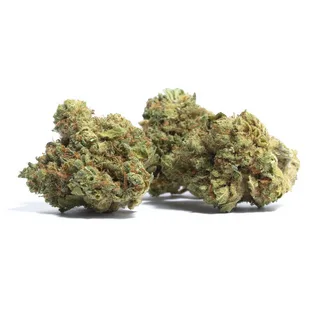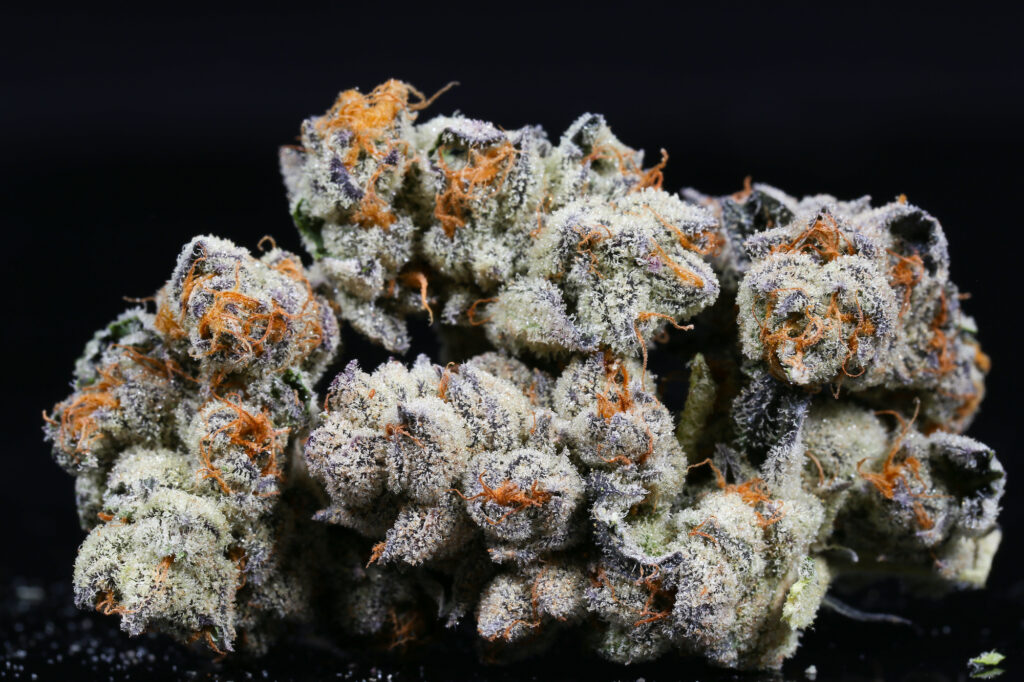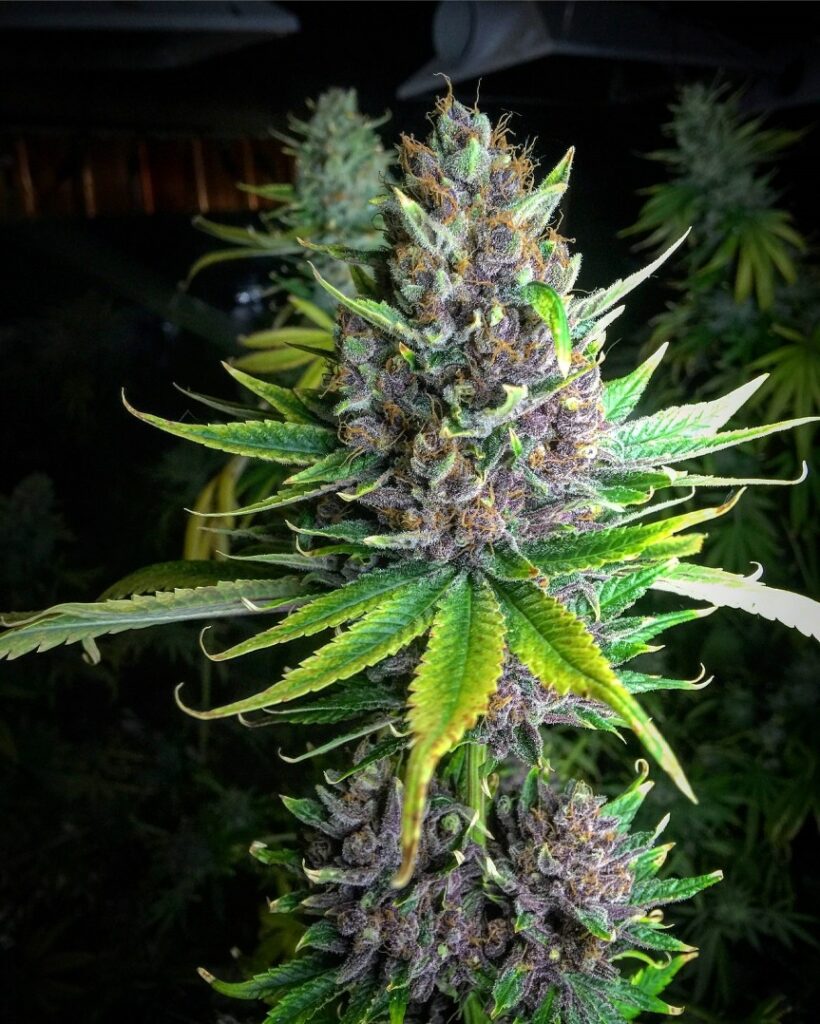Appearance and Aroma
- The Mango OG strain is a visually stunning strain with dense buds that are often covered in trichomes, giving it a frosty appearance.
- The Mango OG strain is a visually stunning strain with dense buds that are often covered in trichomes, giving it a frosty appearance.
- When grown properly, the nugs of this strain are typically medium to large-sized and have a distinctive shape.
- The color palette of the Mango OG strain can vary depending on the growing conditions and genetics, but it often features hues of green with accents of orange or purple.
- One of the standout features of the Mango OG strain is its aroma.
- The scent profile is characterized by notes of mango, as well as hints of citrus and tropical fruit.
- The aroma of this strain can be quite pungent, making it stand out even in a crowded room full of other cannabis varieties.
- When consumed, the Mango OG strain releases a sweet and fruity flavor that is reminiscent of its namesake fruit.
- The taste is often described as tropical, with hints of mango, pineapple, and citrus notes.
- Beneath the surface, there are also earthy undertones that add depth to the flavor profile.
The aroma of Mango OG is sweet and fruity, with hints of tropical mango and a subtle earthy undertone.
The appearance of Mango OG weed strain is characterized by a vibrant green color with hints of purple and orange hues, depending on the growth environment and maturity level.
The buds are typically dense and chunky, with a sticky resinous coating that gives off a pungent aroma when touched or broken apart.
The leaves and stems surrounding the buds appear to be a lighter shade of green, providing an attractive contrast to the darker colored buds.
The aroma of Mango OG is sweet and fruity, with hints of tropical mango and a subtle earthy undertone. The scent is reminiscent of fresh fruit, such as pineapple or papaya, but with a more distinct sweetness that’s hard to ignore.
When combusted, the smoke from Mango OG weed emits a sweet and slightly tangy aroma, which lingers in the air for a short period before dissipating.
The flavor profile of Mango OG is characterized by:
- A sweet and fruity taste, similar to ripe mango
- A hint of earthy undertones, adding depth to the overall flavor experience
- A subtle tanginess that complements the sweetness, making for a balanced and refreshing flavor profile
Effects and Potential Benefits
Mango OG is known for its sedative and relaxing effects, making it an excellent choice for managing stress and anxiety.
Mango OG, a popular cannabis strain, offers several effects and potential benefits that make it a sought-after option for medical marijuana patients and recreational users alike.
One of its primary effects is its sedative and relaxing properties, which help individuals unwind and manage stress and anxiety.
The strain’s ability to promote relaxation can also aid in improving sleep quality by inducing drowsiness and calming the mind and body.
Mango OG’s effects can be attributed to its high THC levels, which range from 15% to 20% or more, depending on the specific cultivar.
Its potent THC content makes it an effective treatment for chronic pain management, including migraines, muscle aches, and joint pain.
The strain also contains other cannabinoids like CBD, CBN, and CBG, which contribute to its medicinal properties and potential benefits.
One of the notable benefits of Mango OG is its ability to reduce inflammation, which can be particularly helpful for individuals suffering from arthritis or fibromyalgia.
The strain’s relaxing effects can also help alleviate symptoms associated with PTSD, such as flashbacks and anxiety attacks.
Mango OG’s potential benefits extend beyond relaxation and pain relief; it may also have anti-inflammatory properties, which can aid in reducing the risk of chronic diseases like cardiovascular disease and diabetes.
The strain has also been reported to have anti-inflammatory properties, which may help alleviate pain and discomfort.
The Mango cannabis strain has gained popularity among medical marijuana users due to its reported therapeutic effects, including its potential benefits for pain management and inflammation reduction.
One of the key characteristics of Mango is its high concentration of THC, which may contribute to its analgesic properties. Studies have shown that THC can bind to cannabinoid receptors in the body, leading to a decrease in pain perception and an increase in feelings of relaxation and euphoria.
In addition to its potential pain-relieving effects, Mango has also been reported to have anti-inflammatory properties. Chronic inflammation is associated with various medical conditions, including arthritis, multiple sclerosis, and inflammatory bowel disease. By reducing inflammation, Mango may help alleviate symptoms and improve the quality of life for individuals suffering from these conditions.
Furthermore, the terpenes present in Mango may also contribute to its therapeutic effects. Terpenes are a class of organic compounds found in plants, responsible for their distinctive aromas and flavors. The combination of terpenes in Mango may enhance its analgesic and anti-inflammatory properties, creating a synergistic effect that is greater than the sum of its individual components.
Individuals experiencing anxiety or stress-related disorders may also benefit from using Mango. The strain’s relaxing effects can help reduce feelings of anxiety and promote a sense of calmness, making it an effective option for individuals seeking relief from stress-related conditions.
The potential benefits of Mango make it a valuable addition to medical marijuana treatments. However, as with any cannabis strain, individual results may vary, and further research is necessary to fully understand its therapeutic effects and optimal dosage ranges.
Cultivation and Genetics
Mango OG is a hybrid strain, resulting from the cross between OG Kush and a Mango strain.
The fascinating world of cultivation and genetics has led to the creation of some truly remarkable strains, including the hybrid Mango OG, a product of the cross between OG Kush and a Mango strain.
OG Kush, one of the most iconic strains in the cannabis industry, is renowned for its potent effects and distinctive flavor profile. Its genetic makeup has been carefully crafted over time through selective breeding to enhance its desirable traits.
On the other hand, the Mango strain brings its own unique characteristics to the table, including a sweet and fruity flavor that has captured the hearts of many enthusiasts.
The combination of OG Kush’s earthy undertones with Mango’s tropical sweetness results in a truly distinctive taste experience. The flavor profile is a masterful blend of both strains’ signature notes, creating something entirely new yet familiar at the same time.
When it comes to its effects, Mango OG lives up to its hybrid heritage by delivering a balanced and enjoyable high that is neither too intense nor too mild. This strain has been reported to provide relief for stress, anxiety, and chronic pain while still allowing users to maintain a clear and focused mind.
Some of the desirable traits of Mango OG can be attributed to its genetics, which have been influenced by the selective breeding process over time. Breeders carefully choose parent strains with specific characteristics that are then combined to create something new and exciting.
In addition to its flavor profile and effects, Mango OG has also gained a reputation for its impressive yields when grown under optimal conditions. This makes it an attractive option for both commercial growers and home cultivators looking to maximize their harvest while minimizing costs.
The cultivation process involves carefully monitoring temperature, humidity levels, lighting, and nutrient intake to ensure that the strain reaches its full potential.
Some key considerations when growing Mango OG include:
- Temperature control: The ideal temperature for growth is between 65-75°F (18-24°C), with slightly cooler temperatures during flowering.
- Nutrient intake: Adequate nutrient supply, particularly nitrogen and phosphorus, is crucial for healthy growth.
- Lighting: Mango OG requires a moderate to high lighting schedule, typically 18 hours of light per day.
Genetics play a vital role in the cultivation process as they determine the strain’s inherent traits and how it responds to different environmental conditions. Understanding the genetic makeup of Mango OG is essential for growers looking to optimize their crop’s potential.
The unique characteristics of Mango OG, coupled with its impressive yields and balanced effects, make it an attractive option for both enthusiasts and commercial growers alike.
Due to its high THC content, growing Mango OG requires careful attention to ensure optimal yield and quality.
The cultivation and genetics of Mango, also known as Mango OG, are crucial for maximizing its high THC content and achieving optimal yield and quality.
To begin with, it’s essential to provide Mango plants with a warm and humid climate, ideally with temperatures ranging from 65°F to 75°F (18°C to 24°C) during the day and around 55°F (13°C) at night. This allows for proper growth and development of the plant.
Mango is a hybrid strain that combines elements of indica and sativa varieties, resulting in a unique genetic makeup. The strain’s high THC content, typically ranging from 20% to 25%, contributes to its potent effects and requires careful attention during cultivation.
To optimize yield and quality, it’s recommended to provide Mango plants with adequate light exposure, usually through a combination of natural sunlight and supplemental lighting. Indoor growers can utilize LED grow lights or HPS (High Pressure Sodium) lamps, while outdoor growers should ensure their plants receive direct sunlight for at least 6 hours a day.
Potassium and magnesium are essential nutrients for Mango plants, helping to promote healthy growth and fruit production. Regular feeding with balanced fertilizer (e.g., N-P-K) and providing sufficient water will also contribute to the plant’s overall well-being.
Here are some key considerations for growing Mango OG:
- LightingProvide a balanced light spectrum, ideally using LED grow lights or HPS lamps in indoor environments.
- NutrientsRegularly feed the plant with potassium and magnesium-rich fertilizers to promote healthy growth and fruit production.
- Temperature and humidityMaintain a warm and humid climate, ideally between 65°F to 75°F (18°C to 24°C) during the day and around 55°F (13°C) at night.
- Pruning and trainingPrune your plants regularly to promote bushy growth and increase yields.
By paying close attention to these factors, you’ll be able to optimize the cultivation of Mango OG and achieve the highest possible THC content and quality.
- Haze Aka Original Haze, Haze Brothers Weed Strain Information - September 16, 2024
- Green Poison Weed Strain Information - September 15, 2024
- Great White Shark Aka Peacemaker, White Shark Weed Strain Information - September 15, 2024









